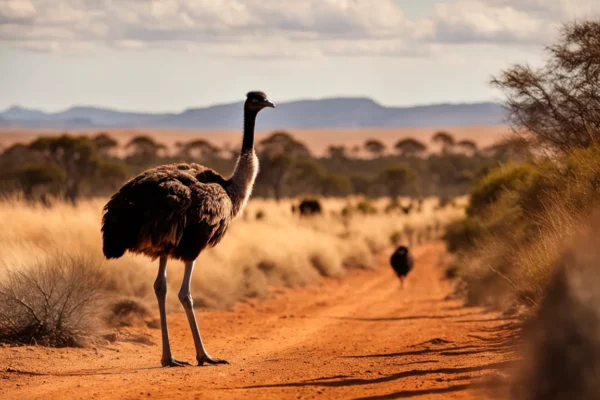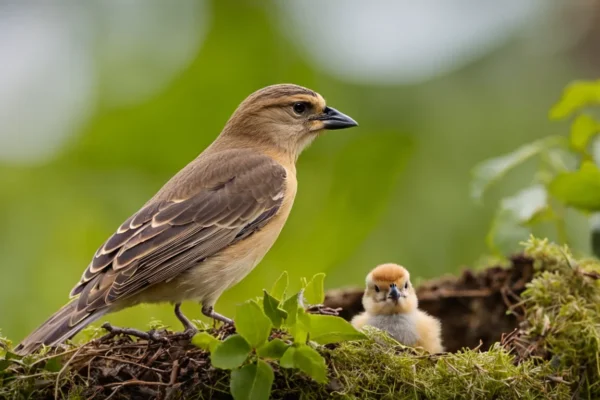The flamingo is an odd bird. For every birdwatcher, seeing these pink waders is an unforgettable experience – peculiar but exquisite, gaunt yet elegant. Although they are most often seen strolling in shallow waters, their long necks and flat, straight legs are never more striking than when they are viewed in flight.
From their feeding and breeding areas, these birds seem to come and go, but do they migrate, and if so, how far?
While there is still much to understand about Flamingo migration, scientists have found that while some species migrate over great distances, others don’t travel at all. These birds migrate differently depending on the species and locality; they are not exclusively migratory.
There is still much to learn about the migration of flamingos. Join us as we explore the ins and outs of these birds’ migration by reading along!
Do Flamingos Migrate?
The Flamingo family comprises six species, all of which exhibit some degree of nomadic and migratory behavior. These birds migrate irregularly, however, and their movements may be a little inconsistent based on the availability of food, the weather, and other variables.
The most well-known species among American birdwatchers is the American Flamingo (Phoenicopterus ruber), which lives in the Caribbean and along the coasts of neighboring Mexico and South America. Although the majority of birds observed in the United States are permanent domestic individuals, these birds used to migrate to Florida. It’s worth investigating potential habitats just in case, however, since these unique birds could be making a return in the Southeast.
Find out more about the whereabouts, timing, and mode of migration of these birds by reading on.

When do Flamingos go south?
The yearly migrations of other birds are more predictable than the movements of flamingos. In the northernmost regions of their Old World habitat, they do, however, usually migrate south for the winter. In order to reproduce, they also travel to certain areas, but only when enough habitats are created by rain.
Since flamingos eat in shallow water, droughts or floods may force them to relocate. These birds are seminomadic in nature, and their search for new feeding areas is prompted by fluctuating water levels. This might lead to migration-like seasonal movements that are determined by local rainfall patterns rather than the season.
What causes Flamingo migration?
There are a number of reasons why these birds could migrate or relocate. The following are the main causes of flamingo migration:
to look for nutrient-dense dietary sources
To escape congested seas
to avoid being disturbed by humans or predators
They could depart because of floods or drought.
Lastly, during the harsh winters, a large number of Flamingos move to warmer regions.
The distance that Flamingos migrate?
Even within the same species, flamingos may exhibit significant differences in their behaviors due to their varying migration distances. While American Flamingos typically move small distances of a few hundred miles or fewer, Greater Flamingos (Phoenicopterus roseus) may wander around 3000 km in Asia.
The Flamingo migration lasts for how long?
When migrating greater distances, flamingos may cover over a thousand kilometers in only two days, despite their shorter trips lasting just a few hours. Even though they can reach a level flying speed of around 40 mph (60 km/h), these birds would rather take advantage of favorable breezes in order to save energy.
A Greater Flamingo is seen. This species may travel up to 3000 km in Asia.
Flamingo migration: Where do they go?
Flamingos migrate in a loose flock and individual birds within the same species may migrate in entirely opposite directions. The same thing that nomadic birds will be searching for are shallow, nutrient-rich feeding places.
Are Flamingos always in flight?
It’s very uncommon for flamingos to travel hundreds of kilometers in a single night! The distance they must travel to reach suitable foraging or breeding areas usually determines whether they will migrate through its whole without pausing.
Do Flamingos migrate in droves?
Flamingos may migrate, live in nomadic communities, or both. Flamingos may stay in one place all year round or migrate between sites that provide excellent feeding circumstances in some regions of the globe.
An image shows a group of Lesser Flamingos about to take off
In winter, where do Flamingos go?
In colder climates, flamingos often migrate to more tropical locations. For instance, a large number of Greater Flamingos that summer in France move to Africa in order to survive the winter months.
Many Flamingos in South America only migrate to lower elevations during the winter. Some Flamingos in the Andes may spend the whole year in lakes heated by hot springs, while others migrate to salt lakes inland or along the coast where the water doesn’t freeze over.
In summer, where do Flamingos go?
For the summer, some Flamingos migrate to higher latitudes (farther from the equator); some even reproduce as far north as Kazakhstan and France. During the warmer months, other species go up to high-lying, mountainous locations.
The Trip: Difficulties and Adjustments
Despite their height, flamingos are nevertheless susceptible to eagles, jackals, and big cats. When moving at night, they are somewhat secure from ravenous mouths, but there is one peril for which nature has not equipped them. Certain animals are at danger from low powerlines and other infrastructure, especially in Africa and India.
Despite their awkward look, flamingos are good flyers who can easily reach speeds of up to 40 mph without stopping for many hours at a time. These birds may soar hundreds of feet above the earth or just over the water’s surface, depending on the circumstances. Similar to several other large waterbirds, Flamingos often travel in a v-formation, which conserves energy for the birds behind the leader.
A flock of Chilean flamingos is shown. Even though they have an awkward look, flamingos can fly rather effectively, easily reaching speeds of up to 40 mph.
Which locations provide the finest views of the Flamingo migration?
Being a common waterbird, flamingos have erratic migratory patterns throughout a large portion of their territory. On the other hand, a lot of flamingos routinely migrate to the following locations:
France’s Camargue National Park
India’s Pulicat Lake
The Makgadikgadi Salt Pans in Botswana; Etosha Pan, Namibia
Are you curious in the locations of Flamingos’ homes and points of view? This fascinating article has further details.
During their journey, what do Flamingos eat?
Unless they make stops at appropriate feeding areas or cover the distance in a single flight, flamingos are unable to eat while migrating. Being omnivores, these birds get food by wading through shallow water and looking for it on the bottom or on the top of the water. Their preferred diets include plants, algae, and aquatic and marine animals.
See our comprehensive guide for additional details on the nutrition of the Flamingo. You will discover why these birds have such a pink color!
Here are several Andean flamingos. When migrating, flamingos are unable to eat unless they pause at certain feeding areas.
FAQs
Are Flamingos Night Migrating?
It is known that, depending on their species and the surrounding conditions, flamingos may migrate during the day or at night. For instance, Greater Flamingos (Phoenicopterus roseus) are less picky about their migration schedule, but Lesser Flamingos (Phoeniconaias minor) often migrate after dark.
Are Flamingos migratory in groups or in pairs?
While you may sometimes see flamingos feeding by themselves, these birds usually congregate in big flocks, or “flamboyances,” and they may move in packs of up to several hundred.
Do Flamingos pass away when migrating?
Flamingos have physical challenges during migration, and older, sicker, or younger birds may die from weariness or other causes. However, remaining in one place is equally dangerous for these birds, since they often travel to avoid diminishing food supplies or severe weather.





